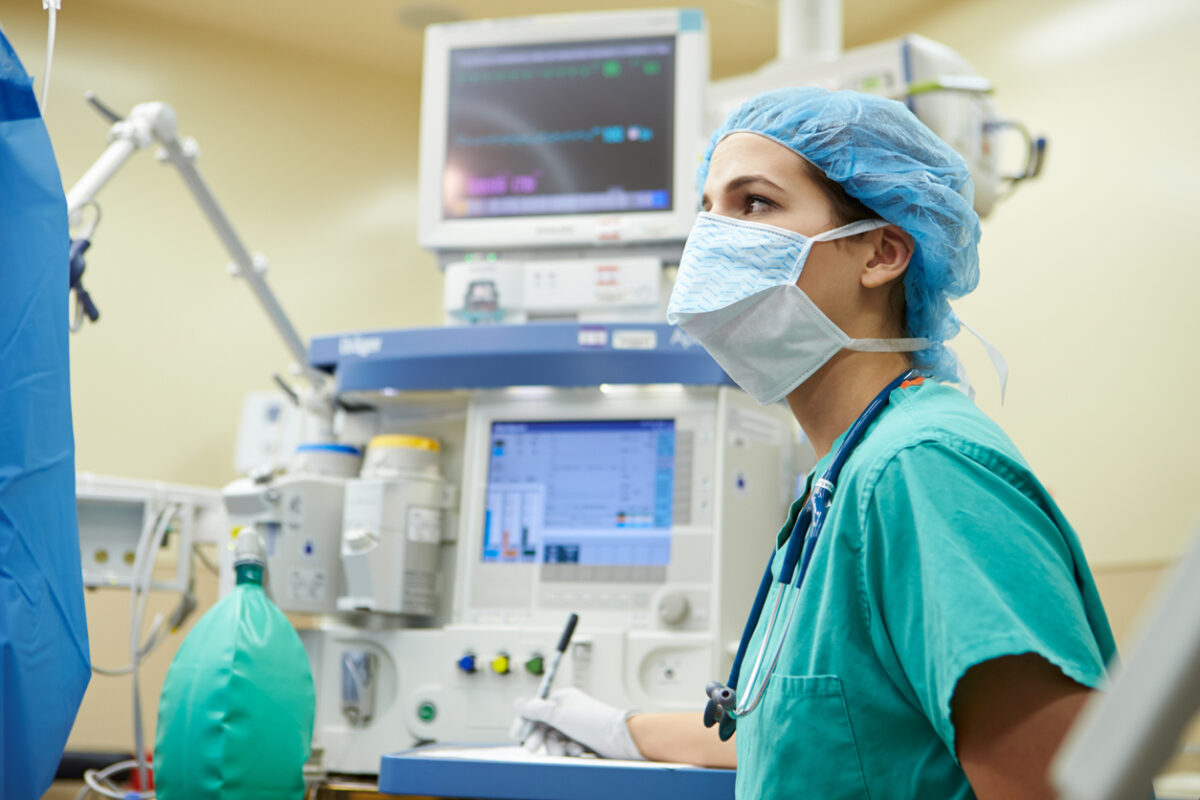Patient Awareness Under Anesthesia

In a small percentage of anesthesia cases, patients report awareness during the procedure. Awareness is defined as recall of intraoperative events after the operation has ended. This can range from somatic sensations, sounds or conversations to, in serious cases, pain related to the operation. When patients experience awareness under anesthesia, the results can be traumatic. However, a study by Sebel et al. of almost 20,000 patients at hospitals across the U.S. found that for every 1,000 procedures, only 1 or 2 patients experienced awareness under anesthesia [1]. Almost always, these cases were a result of improper or inadequate administration of anesthesia medication.
The nature of awareness under anesthesia is inherently difficult to ascertain. Patients often have difficulty recalling the specifics of their experience and, in many cases, will not reveal that they were aware unless asked explicitly. A study by Ghoneim et al. reviewed almost 300 awareness cases published between 1950 and 2005 and found that hearing voices was the most common trait associated with awareness under anesthesia, appearing in 66% of cases. About a third of patients reported feeling pain or anxiety while under anesthesia [2].
Another common trait of awareness under anesthesia is post-traumatic stress disorder (PTSD), which is often only discovered months or years later. Leslie et al. followed up with patients of a previous study on awareness after about five years and found that, of the patients who exhibited awareness under anesthesia, 71% showed symptoms of moderate PTSD [3].
For reasons that are still unclear, awareness under anesthesia is significantly more common in women undergoing c-sections and pediatric patients [4]. Before 1985, the rate of awareness in cesarean anesthesia procedures stood around 1.3% (or 130 instances per 1,000 patients), but a move to relax anesthesia protocols led to a drop in reported cases [5]. However, the rate still remains considerably higher than the general population at around 26 instances per 1,000 patients.
Pediatric patients tend to have the highest recall rates at around 50 to 100 instances per 1,000 patients. Like women undergoing cesarean sections, the reasons behind children’s higher awareness rates are largely unknown, though endoscopic procedures have been shown to lead to higher awareness rates [6]. Some studies have suggested that children’s relative inability to describe their experience may contribute to the wider range of recall rates. However, children are less likely to experience PTSD after exhibiting signs of awareness.
There are, however, several preventative measures that can mitigate the risk of patient awareness. One tool is bispectral index monitoring (BIS), a type of EEG that monitors the effects of anesthesia and sedatives on cerebral anesthesia. In the B-Aware trial — the first to comprehensively study BIS — researchers found that the use of BIS leads to reduced risk of awareness in at-risk adult patients [7]. Almost every study on the topic recommends that doctors check in with patients about potential recall. However, a study by Kent et al. found that 75% of patients who experience recall are disappointed in the hospital’s response [8]. Asking patients about their experience and following up about possible cases of awareness is crucial and can help gird against long-term consequences.
References
[1] Sebel, Peter S., et al. “The Incidence of Awareness During Anesthesia: A Multicenter United States Study.” Anesthesia & Analgesia, vol. 99, no. 3, 2004, pp. 833–839., doi:10.1213/01.ane.0000130261.90896.6c.
[2] Ghoneim, Mohamed M., et al. “Awareness During Anesthesia: Risk Factors, Causes and Sequelae: A Review of Reported Cases in the Literature.” Anesthesia & Analgesia, vol. 108, no. 2, 2009, pp. 527–535., doi:10.1213/ane.0b013e318193c634.
[3] Leslie, Kate, et al. “Posttraumatic Stress Disorder in Aware Patients from the B-Aware Trial.” Anesthesia & Analgesia, vol. 110, no. 3, 2010, pp. 823–828., doi:10.1213/ane.0b013e3181b8b6ca.
[4] Leslie, Kate, and AJ Davidson. “Awareness during Anesthesia: a Problem without Solutions?” Minerva Anesthesiologica , vol. 76, no. 8, Aug. 2010, pp. 624–628.
[5] Lyons, G., and R. Macdonald. “Awareness during Caesarean Section.” Anaesthesia, vol. 46, no. 1, 1991, pp. 62–64., doi:10.1111/j.1365-2044.1991.tb09321.x.
[6] Malviya, Shobha, et al. “The Incidence of Intraoperative Awareness in Children: Childhood Awareness and Recall Evaluation.” Anesthesia & Analgesia, vol. 109, no. 5, 2009, pp. 1421–1427., doi:10.1213/ane.0b013e3181b620b0.
[7] Myles, Ps, et al. “Bispectral Index Monitoring to Prevent Awareness during Anaesthesia: the B-Aware Randomised Controlled Trial.” The Lancet, vol. 363, no. 9423, 2004, pp. 1757–1763., doi:10.1016/s0140-6736(04)16300-9.
[8] Kent, Christopher D, et al. “Patient Perspectives on Intraoperative Awareness with Explicit Recall: Report from a North American Anaesthesia Awareness Registry.” British Journal of Anaesthesia, vol. 115, 2015, pp. i114–i121., doi:10.1093/bja/aev211.
